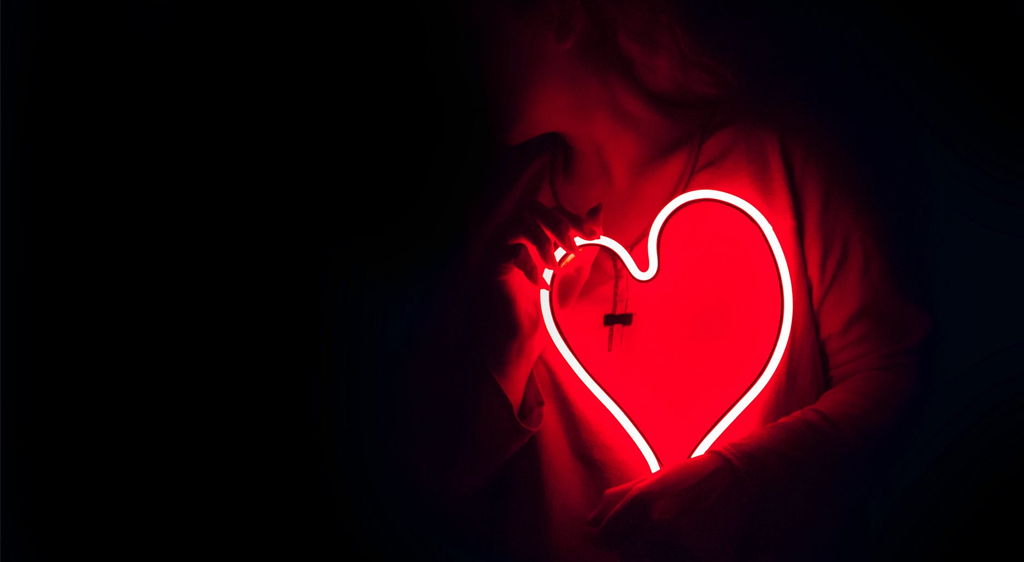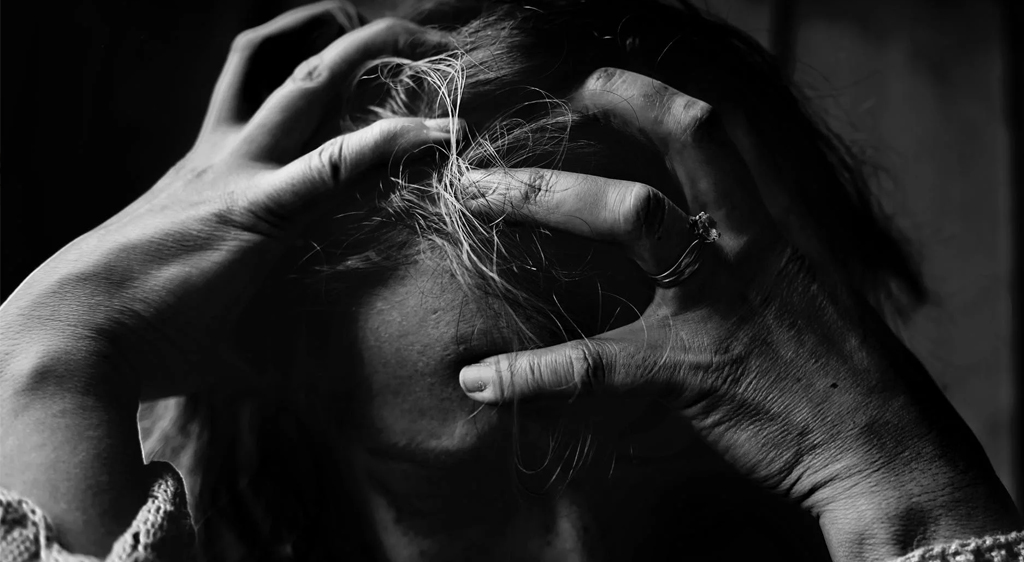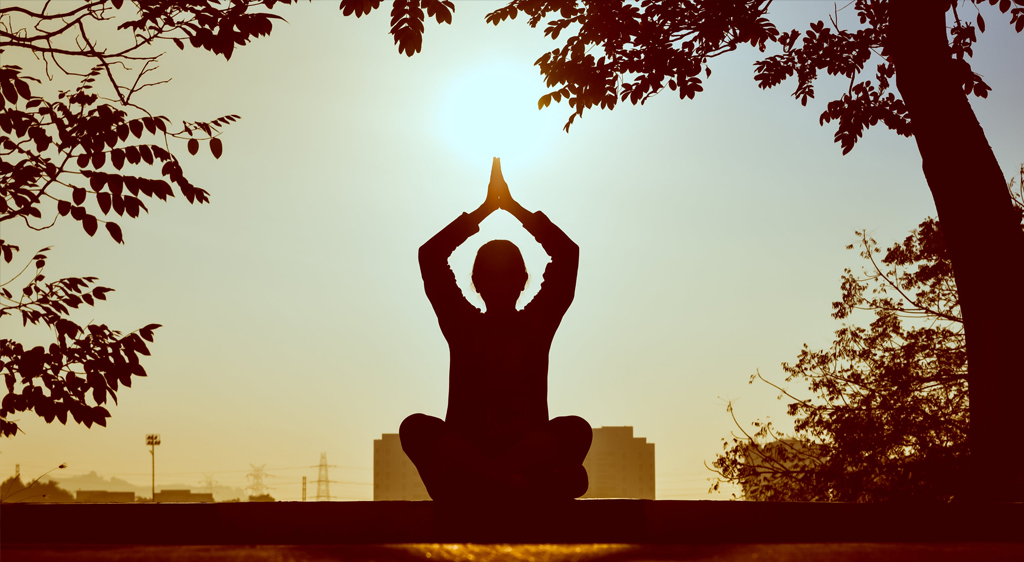Mattresses
SHOP STANDARD SIZES
SHOP STANDARD SIZES
SHOP BY TYPE
SHOP BY BRAND
RV Mattresses
Adjustable Beds
Shop By Brand
Shop By Size
Oversized Beds
Insomnia Statistics
In this busy world, sleep has become a luxury many crave. After a long day at work, nothing feels better to cap it off with a good night’s rest. Unfortunately, sleep deprivation is already seen as an epidemic. Until today, the recommended 7 to 8 hours of sleep still holds true. However, not many can get this. Some, unfortunately, suffer from insomnia. Insomnia is a sleep disorder that keeps people from falling and/or staying asleep.
There are several kinds of insomnia. Acute insomnia is one that lasts from 1 night to a few weeks. Chronic insomnia can last for 3 or months and happens at least 3 nights per week.
Comorbid insomnia is one that occurs with another condition. Insomnia often accompanies psychiatric disorders such as anxiety and depression. Onset insomnia is difficulty falling asleep at the beginning of the night. Lastly, maintenance insomnia is the inability to stay asleep. People with maintenance insomnia wake up during the night and have difficulty returning to sleep. Some researchers and doctors also classify insomnia according to etiology.
Because those who suffer from insomnia struggle with sleep, the main effects are daytime sleepiness, lethargy, and generally feeling unwell. both mentally and physically. Thus, insomnia severely reduces the quality of life of people. (Huffington Post), (American Journal of Managed Care), (National Sleep Foundation)
The Most Surprising Insomnia Statistics
- A general consensus from various insomnia statistics approximates that 30% of adults in the world suffer from the sleep disorder.
- Of the adults who have insomnia, around 10% to 15% suffer from chronic insomnia that lasts for more than a month.
- The lifetime prevalence of insomnia among people between 21 and 30 years old is 24.6%.
- Insomnia remissions may be experienced by 46% of women and 52% of men.
- About 25 to 35% of adults with insomnia have transient or occasional insomnia.
- Insomnia statistics show that 13 to 47% of the elderly suffer from the disorder.
- Fortunately, insomnia symptoms resolve in around 15% of the elderly.
- There is, however, an estimated annual incidence of 5% among the elderly.
General Insomnia Statistics and Facts
1. In the US, 1 in 4 people experiences insomnia each year.
A study on 1,435 adults by researchers from the University of Pennsylvania School of Medicine showed that 25% experience acute insomnia. Fortunately, about 75% of these individuals recover within 12 months without developing persistent poor sleep or chronic insomnia.
(University of Pennsylvania School of Medicine)
2. Around 21% of those with acute insomnia still slept poorly.
In the same study, the 21% who didn’t fully recover had recurring bouts of acute insomnia and around 6 percent developed chronic insomnia.
(University of Pennsylvania School of Medicine)
3. Insomnia statistics show that around 35% of people report a family history of the disorder.
Researchers found that out of 953 adults, there was a tendency to report at least 1 first-degree relative with past or current insomnia.
(National Center for Biotechnology Information)
4. Nearly 40% of those with past or current insomnia were more likely to report a family history of insomnia.
Those who never experienced insomnia had only a 29% chance of reporting a family history of the disorder. This indicates that insomnia may be hereditary.
(National Center for Biotechnology Information)
5. Around 20% of people with insomnia report that their mother also had insomnia.
Subjects then reported that the next first-degree relatives that had insomnia were the sister, (11.1%), father (7.5%), and brother (5.9%). For 2.2% of the sample, both parents had past or current insomnia.
(National Center for Biotechnology Information)
6. Women are slightly more likely to have insomnia.
A 2005 National Sleep Foundation poll found that 57% of women and 51% of men said they experienced a symptom of insomnia at least a few nights per week.
(National Sleep Foundation)
7. Approximately 75 to 90% of people with insomnia have increased risk for comorbid medical disorders.
Besides insomnia, researchers found that subjects were also suffering from other disorders such as major depressive disorder subthreshold disorder, heart failure, obstructive airway disease, back problems, hip impairment, and prostate problems.
(David Katz, MD and Colleen McHorney, PhD)
8. Insomnia statistics show that the mortality rate of men with insomnia was 21% while for women was 5%.
The mortality risk was significantly higher in male insomniacs who slept less than 6 hours compared to those who slept normally. On the other hand, researchers could not associate mortality with insomnia and short sleep duration in female insomniacs.
(Alexandros N. Vgontzas, MD)
Insomnia Increases Risks of Cardiovascular Diseases
9. Insomnia has high comorbidity with cardiovascular diseases (CVDs).
Several studies demonstrate that insomnia is associated with CVDs. Although how insomnia allows CVD is still poorly understood, there are some proposals. Insomnia can interfere with the normal functions of the hypothalamic-pituitary axis which increases the risk of CVDs. Insomnia also makes the sympathetic nervous system (SNS) hyperactive. The SNS is essential in controlling the functions of the cardiovascular system. Thus, insomnia can interfere with cardiovascular functions such as heart rate, blood pressure, and stroke volume.
(Sogol Javaheri, MD and Susan Redline, MD)
10. Researchers found that insomnia raises the likelihood of subsequent hospitalization for stroke by as much as 54% over 4 years.
Researchers found that people who reported themselves to have insomnia had a higher risk of stroke. Moreover, the researchers found that stroke was 8 times higher among those diagnosed with insomnia between 18-34 years old. Beyond age 35, the risk continually decreased.
(AHA/ASA Journals)
11. Insomnia statistics show a 15% increased risk of having a stroke for those who sleep for 6 hours or less had compared to those who slept normally.
Numerous studies have suggested the relationship between sleep duration and risks of stroke mortality and morbidity. Moreover, for every hour reduction in sleep duration, the risk for stroke increases by 7%. In a different study in Europe, insomnia statistics show a 106% increased risk of having a stroke for those who sleep for 6 hours or less.
(National Center of Biotechnology Information)
12. People with insomnia symptoms had a 10 to 22% increased risk of coronary artery disease.
Researchers in China who followed nearly 500,000 people for nearly 10 years saw that 16.4% reported insomnia symptoms. These people had an increased risk of cardiovascular disease between 7 and 18%. Moreover, these people also had a 1 to 10% increased risk of ischemic stroke.
(Neurology.org)
13. People with insomnia have a 27% increased chance of having atherosclerosis.
Researchers from Spain studied healthy nearly 4,000 middle-aged adults. The researchers found that those who had short or disrupted sleep had more blocked or narrow arteries.
(European Society of Cardiology)
14. People with insomnia symptoms can have as much as 4.5 times more risk of heart failure.
Researchers from Norway followed more than 40,000 people for over 11 years. After considering several factors, the researchers found that insomnia symptoms were nearly always increased the risk of heart failure. In a different study, researchers found that those who struggled to fall asleep had a 22% increase in their risk of heart failure while those who struggled to stay asleep had a 14% increase.
(European Heart Journal), (Dr. Inglesson, PhD)
Insomnia is associated with Metabolic Syndrome
15. Studies demonstrate that insomnia can predict the development of metabolic syndrome and aggravate symptoms.
Sleep regulates hormonal and metabolic processes. Thus, disturbances in sleep interfere with this homeostasis and can lead to metabolic syndrome. Metabolic syndrome is a group of conditions that occur together increase someone’s risk of heart disease, stroke, and type 2 diabetes. These conditions include increased blood pressure, high blood sugar, excess body fat around the waist, and abnormal cholesterol or triglyceride levels.
(Sunil Sharma, MD and Mani Kavura, MD), (Mayo Clinic)
16. Researchers found hypertension was present in 43 to 48% in people with insomnia.
Researchers from Beijing found hypertension was prevalent in people in their 50s who self-reported to have insomnia. Of the people with insomnia, hypertension was present in around 40% of men and 44 to 50% in women. Researchers did not find a statistically significant association between insomnia and hypertension in men, but they did in women.
(National Center of Biotechnology Information)
17. People with insomnia had a 55 to 89% increased risk of developing obesity.
Obesity develops when energy intake is greater than expenditure. Diet and physical activity play an important part in this. However, sleep is also essential. Short or poor quality sleep interferes with appetite, particularly with the effects of ghrelin and leptin, which are the hunger and satiety hormones respectively. Researchers who studied over 600,000 people found that obesity was present in 55% of adults who slept for less than 5 hours and in 89% of children who slept for less than 10 hours.
(Dorit Koren, MD), (Science Daily)
18. Lack of sleep reduces energy expenditure by as much as 20%.
Researchers found that men with normal weight had a 5% and 20% decreases in their resting and postprandial energy expenditures, after 24 hours of being awake. These men also had increased hunger and food intake. Moreover, insomnia or general sleep deprivation commonly leads to daytime sleepiness, lethargy, and a general feeling of being unwell, both mentally and physically. These can consequently lead to reduced energy expenditure. These conditions can confound and lead to weight gain.
(Christian Benedict, PhD), (WebMD)
19. People with insomnia symptoms have an increased risk of type 2 diabetes by as much as 74%.
Sleep disturbances are now known as significant risk factors for diabetes. Researchers found that people who struggled to fall asleep increased their risk of type 2 diabetes by 55% while those who struggled to stay asleep increased their risk of 74%. Moreover, those who slept for 6 hours or less had increased their risk by 18 to 48%. The researchers concluded that the risk of developing diabetes associated with sleep disturbances is comparable to that of being physically inactive.
(Dr. Thunyarat Anothaisintawee)
20. Insomnia statistics show that 50% of adults with the sleep disorder also have mental disorders.
In general, sleep and mental health are closely connected. People with a sleep disorder like insomnia that deprives them of adequate and good-quality sleep are more likely to also suffer from psychiatric conditions. Moreover, mental health disorders can affect sleep qaulity and develop into a full-blown disorder. Some researches even greater prevalence of insomnia in people with mental disorders.
(National Center of Biotechnology Information), (Harvard Health Publishing)
Insomnia and Mental Disorders are Connected
21. Insomnia occurs in up to 80% of people with depression.
Sleep disorders occur so frequently with depression that, in the absence of sleep complaints, a diagnosis of depression should be made with caution. Insomnia may occur in 60 to 80% of depressed patients. Depressive symptoms are important risk factors for insomnia, and depression is an important comorbid condition in patients with chronic insomnia of any etiology.
(Dovepress)
22. People with insomnia can be 17.35 times as likely to have anxiety.
High insomnia frequency is related to high anxiety. Moreover, people with insomnia can be 9.82 times as likely to have depression. In a separate study, 42.1 to 62.8% of people with comorbid mood and anxiety disorders also had insomnia. Severe insomnia complaints were also significantly more prevalent in individuals with mood (25.2-45.6%) or anxiety disorders only (24.9-45.5%). In a more recent study in South Korea, people with anxiety and depression 19.7 and 9.8 times more likely to be of high risk for insomnia, respectively. Out of 2,762, of the participants with insomnia, 21.7% had anxiety, 7.2% had depression, and 18.6% had both anxiety and depression.
(National Center of Biotechnology Information)
23. As much as 100% of people with bipolar disorder can also have insomnia.
Sleep disturbance is a core symptom of bipolar disorder. During a manic episode, 69 to 99% of patients have a lower need for sleep and take a longer time to fall asleep. Likewise, during an episode of depression, bipolar patients experience insomnia and/or hypersomnia. This can range from 78 to even 100% of patients. In children, sleep disturbances can be an early marker for bipolar disorder.
(Allison G. Harvey, PhD)
24. Insomnia can be present in as much as 80% of patients with schizophrenia.
In schizophrenia, insomnia commonly coincides with the prodromal stage, periods of relapse, and experience of positive symptoms, such as hallucinations and delusions. Unfortunately, many doctors commonly overlook insomnia in patients with schizophrenia. Many schizophrenia treatment guidelines also do not address insomnia. People with schizophrenia often report that their sleep difficulties fluctuate over time, so it can be helpful to track when sleep changes have occurred and to identify potential triggers for these changes.
(Psychiatry Advisor)
25. Insomnia may be due to other conditions, or it may be the problem itself.
As mentioned above, insomnia is commonly linked to other ailments such as mental health disorders. Insomnia can be a symptom of the disorder, or it can be a side effect of medical treatment. Insomnia can also be the main problem. Chronic insomnia is commonly due to stress, life events, or habits that disrupt sleep. Some common stresses that cause insomnia are work, school, health, and finances. Some life events that may cause insomnia are traumatic ones such as the death of a loved one, job loss, and failure. Activities that disrupt the circadian rhythm also causes insomnia. These include working the night-shift, traveling to different time zones, consuming too much caffeine, especially close to bedtime, or simply putting off sleep for minor activities such as video games or watching a movie or series. Eating too much close to bedtime can also cause insomnia. Being full of food can be comfortable for some. This can also lead to heartburn which can disrupt sleep.
(Mayo Clinic)
26. As much as 33% of people with insomnia can have daytime consequences.
An international study demonstrated that 20-33% of subjects reported severe daytime impairments associated with sleep disturbances. Impact on mood, making the subject either tense or irritable, was considered as severe by more subjects compared to the other daytime consequences. Other negative effects were lower concentration, lower memory capability, and higher feelings of depression. Insomnia symptoms also negatively affected social areas such as relationships, leisure activities, and work activities.
(Science Direct)
Insomnia Treatments
27. Only 20% believed medication was the best for their condition.
Researchers studied 218 people with insomnia, that either had psychiatric complaints as well or didn’t. All patients were using a prescription medication primary purpose of treating a sleep disturbance. About 74% that they had been seeking help for their sleep problems for a long time. About 47% reported frustration with previous physicians in their attempts to solve their sleep problems. Only 20% of patients believed that the correct medication would solve their sleep problems, whereas 55% were undecided on this question, and 24% believed medications would not solve their problems.
(Barry Krakow, MD)
28. At least 150 minutes of exercise per week improves sleep quality.
Unconventional methods such as lifestyle changes can improve insomnia symptoms. A study demonstrated that 150 minutes of moderate to vigorous activity in a week improved sleep quality by 65%. Other unconventional methods and lifestyle changes include meditation, avoiding caffeine, cooling the bedroom, and more.
(National Sleep Foundation), (WebMD)
29. Cognitive behavior therapy appears to be the best method for insomnia, with lasting benefits for 70% of patients.
Cognitive behavioral therapy, or ‘CBTi’ trains people to use techniques that address the mental or cognitive factors associated with insomnia. It also allows patients to overcome the worry and other negative emotions that accompany the experience of being unable to sleep. Moreover, CBTi helps people with poor sleep establish a healthy sleep pattern. CBTi is considered to be the gold standard in treating insomnia.
(Sleepio)
Conclusion
How sleep should comprise a third of adult human life shows how integral it is in life and health. Insomnia is thus a detrimental disorder that targets one of the most primal aspects of human physiology. If not treated well, insomnia can have devastating consequences in many areas of human life. Therefore, insomnia should not be taken lightly.
References
https://www.ncbi.nlm.nih.gov/pmc/articles/PMC1978319/
https://www.ajmc.com/journals/supplement/2006/2006-05-vol12-n8suppl/may06-2307ps214-s220
https://www.sciencedaily.com/releases/2018/06/180605154114.htm
https://www.ncbi.nlm.nih.gov/pmc/articles/PMC2276141/pdf/aasm.30.12.1739.pdf
https://www.sleepfoundation.org/insomnia/insomnia-you/insomnia-women
https://jamanetwork.com/journals/jamainternalmedicine/fullartcle/205708
https://www.ncbi.nlm.nih.gov/pmc/articles/PMC2938855/
https://www.ncbi.nlm.nih.gov/pmc/articles/PMC5577359/
https://www.ahajournals.org/doi/full/10.1161/STROKEAHA.113.003675
https://www.ncbi.nlm.nih.gov/pubmed/27584562
https://www.ncbi.nlm.nih.gov/pmc/articles/PMC3266295/?report=reader
https://n.neurology.org/content/93/23/e2110#ref
https://www.sciencedaily.com/releases/2018/08/180826120751.htm
https://academic.oup.com/eurheartj/article/35/21/1382/582739
https://www.ncbi.nlm.nih.gov/pubmed/16884954
https://new.hindawi.com/journals/ije/2010/270832/
https://www.mayoclinic.org/diseases-conditions/metabolic-syndrome/symptoms-causes/syc-20351916
https://www.ncbi.nlm.nih.gov/pmc/articles/PMC4832700/
https://www.ncbi.nlm.nih.gov/pmc/articles/PMC5003523/
https://www.sciencedaily.com/releases/2012/04/120417080350.htm
https://www.webmd.com/sleep-disorders/daytime-fatigue#1
https://www.sciencedirect.com/science/article/pii/S108707921500146X?via%3Dihub
https://www.ncbi.nlm.nih.gov/pubmed/2769898
https://www.health.harvard.edu/newsletter_article/sleep-and-mental-health
https://www.ncbi.nlm.nih.gov/pubmed/16335332
https://www.ncbi.nlm.nih.gov/pmc/articles/PMC3443763/
https://www.ncbi.nlm.nih.gov/pmc/articles/PMC6700255/
https://www.ncbi.nlm.nih.gov/pmc/articles/PMC3321357/
https://www.mayoclinic.org/diseases-conditions/insomnia/symptoms-causes/syc-20355167
https://www.sciencedirect.com/science/article/pii/S1389945710003382?via%3Dihub
https://www.ncbi.nlm.nih.gov/pmc/articles/PMC2983459/#!po=4.80769
https://www.sleepfoundation.org/articles/study-physical-activity-impacts-overall-quality-sleep
https://www.webmd.com/sleep-disorders/alternative_treatments_for_insomnia#1
https://www.sleepio.com/cbt-for-insomnia/
https://www.sleepfoundation.org/insomnia/what-insomnia/different-types-insomnia
© 2025 Rest Right Mattress. All Rights Reserved.





